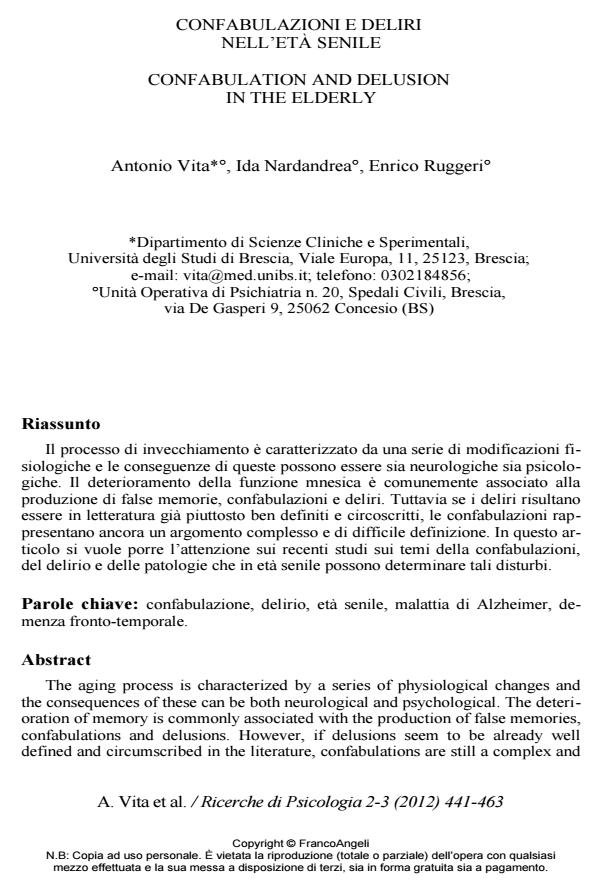Confabulazioni e deliri nell’età senile
Titolo Rivista RICERCHE DI PSICOLOGIA
Autori/Curatori Antonio Vita, Ida Nardandrea, Enrico Ruggeri
Anno di pubblicazione 2013 Fascicolo 2012/2-3
Lingua Italiano Numero pagine 23 P. 441-463 Dimensione file 349 KB
DOI 10.3280/RIP2012-002020
Il DOI è il codice a barre della proprietà intellettuale: per saperne di più
clicca qui
Qui sotto puoi vedere in anteprima la prima pagina di questo articolo.
Se questo articolo ti interessa, lo puoi acquistare (e scaricare in formato pdf) seguendo le facili indicazioni per acquistare il download credit. Acquista Download Credits per scaricare questo Articolo in formato PDF

FrancoAngeli è membro della Publishers International Linking Association, Inc (PILA)associazione indipendente e non profit per facilitare (attraverso i servizi tecnologici implementati da CrossRef.org) l’accesso degli studiosi ai contenuti digitali nelle pubblicazioni professionali e scientifiche
Il processo di invecchiamento e caratterizzato da una serie di modificazioni fisiologiche e le conseguenze di queste possono essere sia neurologiche sia psicologiche. Il deterioramento della funzione mnesica e comunemente associato alla produzione di false memorie, confabulazioni e deliri. Tuttavia se i deliri risultano essere in letteratura gia piuttosto ben definiti e circoscritti, le confabulazioni rappresentano ancora un argomento complesso e di difficile definizione. In questo articolo si vuole porre l’attenzione sui recenti studi sui temi della confabulazioni, del delirio e delle patologie che in eta senile possono determinare tali disturbi.
Parole chiave:Confabulazione, delirio, eta senile, malattia di Alzheimer, demenza fronto-temporale
Antonio Vita, Ida Nardandrea, Enrico Ruggeri, Confabulazioni e deliri nell’età senile in "RICERCHE DI PSICOLOGIA " 2-3/2012, pp 441-463, DOI: 10.3280/RIP2012-002020